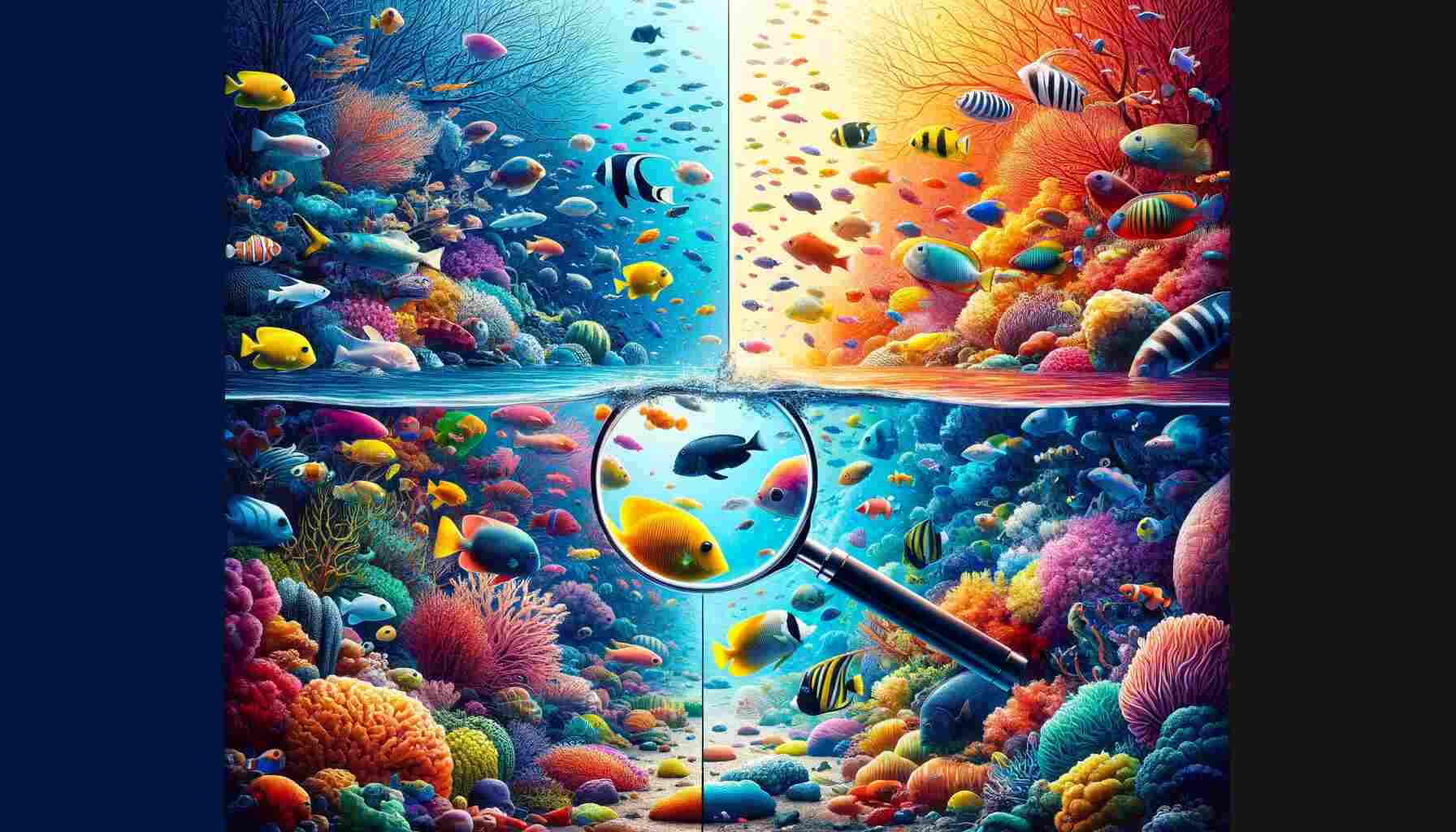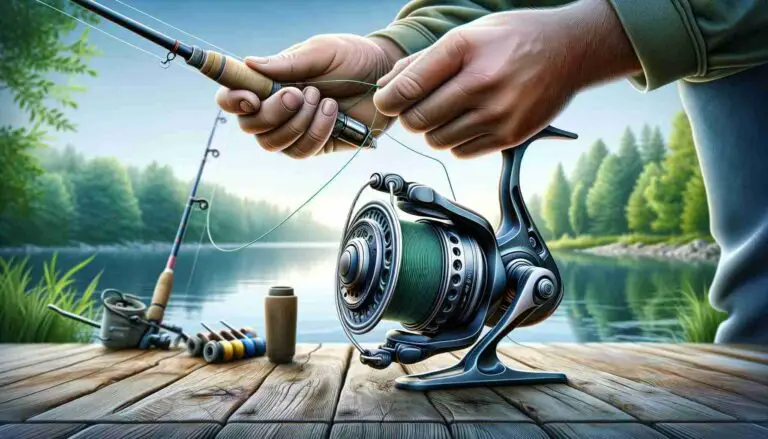Fish are a diverse group of creatures, inhabiting oceans, rivers, lakes, and even tiny ponds. With over 34,000 recognized species, they exhibit an incredible range of adaptations to their environments. One aspect of their biology that has long captured our imagination is their vision. Do they see the vibrant hues of the underwater world like we do, or are they indeed colorblind?
Fish aren’t colorblind but see colors differently. They have limited color vision due to their photoreceptor types and underwater environment.
The Myth of Fish Being Colorblind
The belief that fish are colorblind has been perpetuated for generations, but like many myths, it’s rooted in partial truth. It’s true that fish do not perceive color in the same way humans do. To understand why, we need to explore the science behind fish vision.
The Science of Fish Vision
Photoreceptor Types
Human eyes have three types of photoreceptor cells, known as cones, that are responsible for color vision. These cones are sensitive to different wavelengths of light: short (blue), medium (green), and long (red). When these cones detect light of different wavelengths, our brains interpret it as various colors.
Fish, on the other hand, have a different setup. Most fish species possess only two types of cones, making them dichromatic. These cones are usually sensitive to shorter wavelengths, similar to our blue and green cones. Consequently, fish perceive a limited spectrum of colors compared to humans.
Water and Light Absorption
Another critical factor in fish vision is the medium in which they live: water. Water absorbs and scatters light differently from air. As sunlight penetrates the water’s surface, longer wavelengths (red and orange) are absorbed quickly, leaving behind the shorter wavelengths (blue and green). This means that colors like red and yellow are less visible underwater.
The Reality of Fish Vision
While fish may not perceive the same spectrum of colors as humans, they are far from being colorblind. Let’s take a closer look at their visual abilities.
UV Sensitivity
One fascinating aspect of fish vision is their ability to see ultraviolet (UV) light. Many fish have specialized photoreceptors that allow them to detect UV wavelengths, which are invisible to humans. This UV vision serves several crucial purposes for fish.
Camouflage Detection
UV vision helps fish spot patterns on other fish or predators that might be invisible in the visible spectrum. It allows them to recognize mates, identify species, and even detect potential threats.
Finding Food
Some aquatic organisms, like plankton, reflect UV light. Fish with UV vision can use this ability to locate food sources that are invisible to other predators.
Color Discrimination
While fish may not see the full spectrum of colors, they are still capable of discriminating between various hues within their limited range. Their ability to distinguish between shades of blue and green, for example, is crucial for tasks such as finding food and avoiding predators.
Color Changes
It’s important to note that some fish can change color. This ability is often used for communication, camouflage, and mating displays. For these fish, color is a dynamic aspect of their visual world.
Variations Among Fish Species
Fish vision is not a one-size-fits-all phenomenon. Different fish species have evolved various adaptations to their visual needs, leading to significant variations in their color perception.
Diurnal vs. Nocturnal Vision
Some fish are primarily active during the day (diurnal), while others come alive at night (nocturnal). Diurnal fish often have better color vision because they need to discern between prey and predators in well-lit environments. Nocturnal fish, on the other hand, may have reduced color vision but enhanced low-light sensitivity.
Habitat-Specific Adaptations
Fish living in different habitats, such as coral reefs, murky rivers, or deep-sea environments, may have specialized vision adaptations. For instance, reef fish often need acute color vision to navigate the colorful coral landscape, while deep-sea fish may rely more on detecting bioluminescent signals in complete darkness.
The Role of Environment
The environment in which a fish lives plays a crucial role in shaping its visual abilities. Factors such as water clarity, depth, and the presence of other species all influence how a fish perceives color.
Water Clarity
In clear, transparent waters, fish can make better use of their color discrimination abilities. However, in turbid or murky waters, where visibility is reduced, fish may rely more on other senses like smell and lateral line detection.
Depth
As you descend deeper into the ocean, less light penetrates, and the available spectrum shifts toward blue and green. Fish dwelling in these deep, dark realms have adapted to make the most of the available light.
Evolutionary Perspectives
Understanding fish vision from an evolutionary perspective sheds light on why different species have developed varying levels of color vision.
Evolution of Color Vision
The evolution of color vision in fish is a complex process driven by the selective pressures of their environment. Fish that can better discriminate colors that are important for their survival, such as finding prey or avoiding predators, have a distinct advantage.
Trade-offs
Evolution often involves trade-offs. In the case of fish vision, investing in the ability to see a broader spectrum of colors might come at the expense of other sensory adaptations. Thus, fish have evolved a vision that is tailored to their specific ecological niche.
The Beauty of Fish Vision
While we may never fully grasp the intricacies of fish vision from a human perspective, it’s essential to appreciate the beauty of their unique visual world. Fish have evolved remarkable adaptations to navigate the challenges of their aquatic habitats.
Communication
Color plays a significant role in fish communication. Many species use vibrant displays to attract mates, establish territory, or signal submission.
Camouflage
Some fish are masters of camouflage, using their ability to change color and pattern to blend seamlessly with their surroundings. This is not only a defense mechanism but also a way to ambush prey.
Spectacular Displays
The underwater world is filled with breathtaking displays of color. Coral reefs, in particular, are teeming with fish showcasing a stunning array of hues. Understanding fish vision allows us to appreciate the intricate relationships between these creatures and their vibrant environments.
Conclusion
In conclusion, fish are not colorblind in the way that humans understand color vision. They perceive a more limited range of colors, but their visual abilities are finely tuned to the challenges and opportunities of their underwater habitats. Fish’s vision is a testament to the incredible diversity and adaptability of life on our planet.
Next time you find yourself snorkeling or diving, take a moment to observe the colorful fish around you. While they may not see the world exactly as you do, their unique vision adds an extra layer of wonder to the beauty of the underwater realm. So, are fish colorblind? No, they are not. They have their own way of seeing, and it’s a sight to behold.
Here is the answer to another curious question: Can Bass See at Night?








